Reviews
Anselm Kiefer’s ‘Walhalla’ Is the Powerful Image of War and Destruction Our Politicians Need to See
The massive exhibition imbues the viewer with a sense of mythological doom.
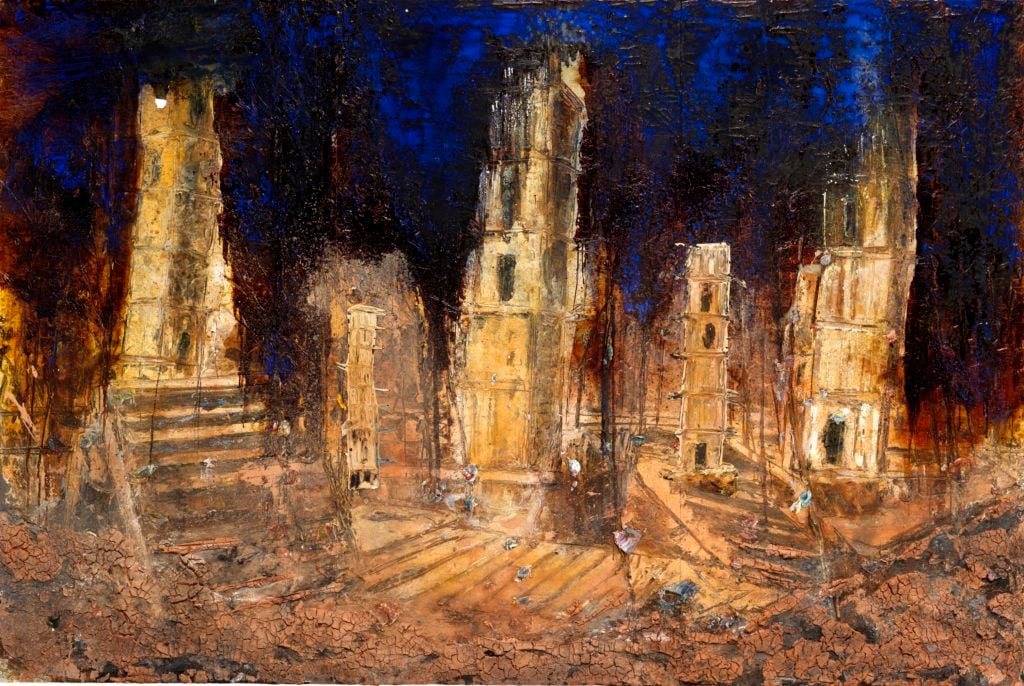
The massive exhibition imbues the viewer with a sense of mythological doom.

Caroline Elbaor

Upon approaching the reception area that precedes Anselm Kiefer’s newest exhibition, “Walhalla,” at White Cube in London, one is greeted by a black-clad security guard. His task is to dutifully hand out sheets to visitors with the following warning: “Please do not touch any of the artworks. Many of them are made from lead, which is potentially hazardous. If you accidentally touch the works, it is recommended that you wash your hands thoroughly.”
It goes on to insist that “children must have their hands held” at all times due to the “potentially dangerous” works. And this is all before you even enter the exhibition.
By hyping the psychological build-up and conditioning of how one might experience the ominous nature of the works, White Cube is—intentionally or not—playing into the long history of Kiefer’s dark-toned artistic oeuvre, of which his latest exhibition does not stray.
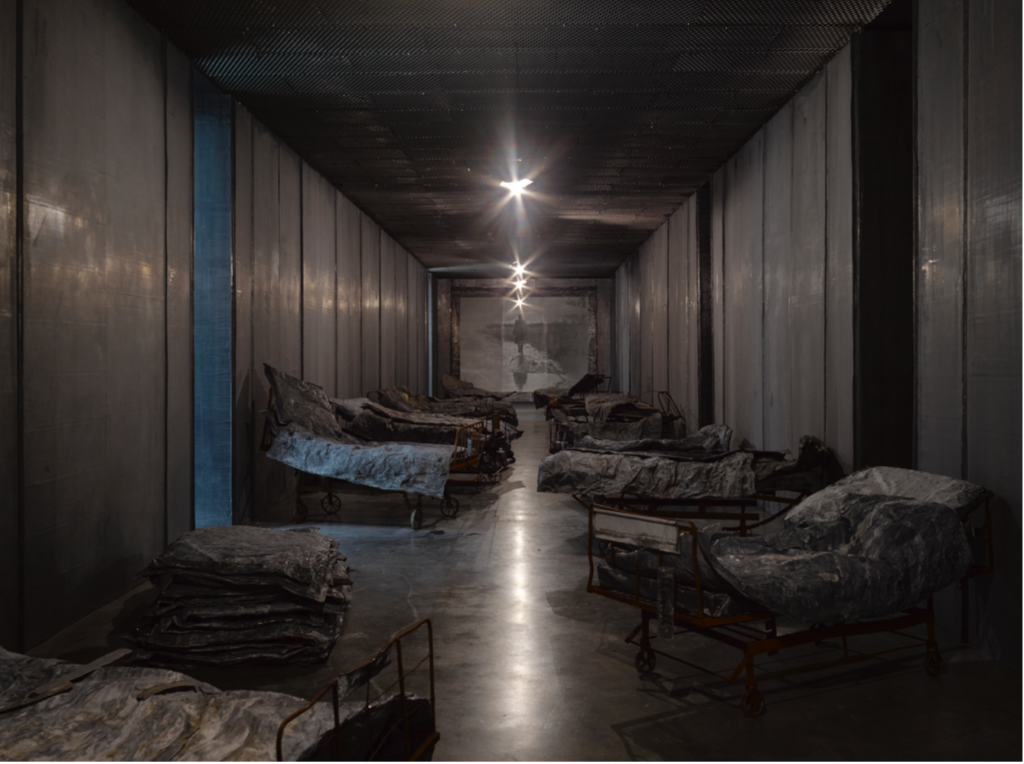
Installation view of Anselm Kiefer, Walhalla (2016). Courtesy of White Cube (Ben Westoby).
For “Walhalla,” the canonical German artist has taken up the entirety of White Cube’s massive Bermondsey space with new sculpture, painting, and a large-scale installation. The number of works on view (totaling 17 in one gallery alone) seem to align the exhibition with a survey show, and the density and detail of their execution—requiring total attention from the viewer—give the sensation that far more than 29 works make up the exhibition.
The first gallery, featuring the major installation Walhalla (2016), is certain to appear on social media (mine admittedly included), and, only a day after the show’s public opening, is the most ubiquitous image to be circulated throughout the press. Situated in a narrow corridor space, oxidized with led, the dimly-lit room—whose source of light are bare bulbs that hang limply from the ceiling—is lined with rows of rickety, weathered old beds, seemingly produced for mass use in a past time. (Walhalla—which comes from the Old Norse Valhöll for ”hall of the slain”—appears multiple times in the show, as there are several works with the same title).
These battered fold-up beds are draped in “dark gray crumpled” sheets and a lead cover, the weight of which they seem barely able to withstand. The feel is that the last remnants of society live there; those who have given up on everything: light, life—surviving, really—if they are sleeping on lead beds, especially ones that are fold-up and easily discarded in the case of a sudden absence.
As the press release suggests, Walhalla indeed does recall institutional dormitories, or a battlefield hospital. However, unlike the gallery’s implication that the room’s beds can be interpreted as “a place of rest or perhaps of transformation,” Walhalla remains staunchly pessimistic: at the corridor’s far end, an image of a solitary figure walking away from the viewer into a blustery winter landscape seems to predict a heavy, melancholic outcome for those affected by tragedy or conflict.
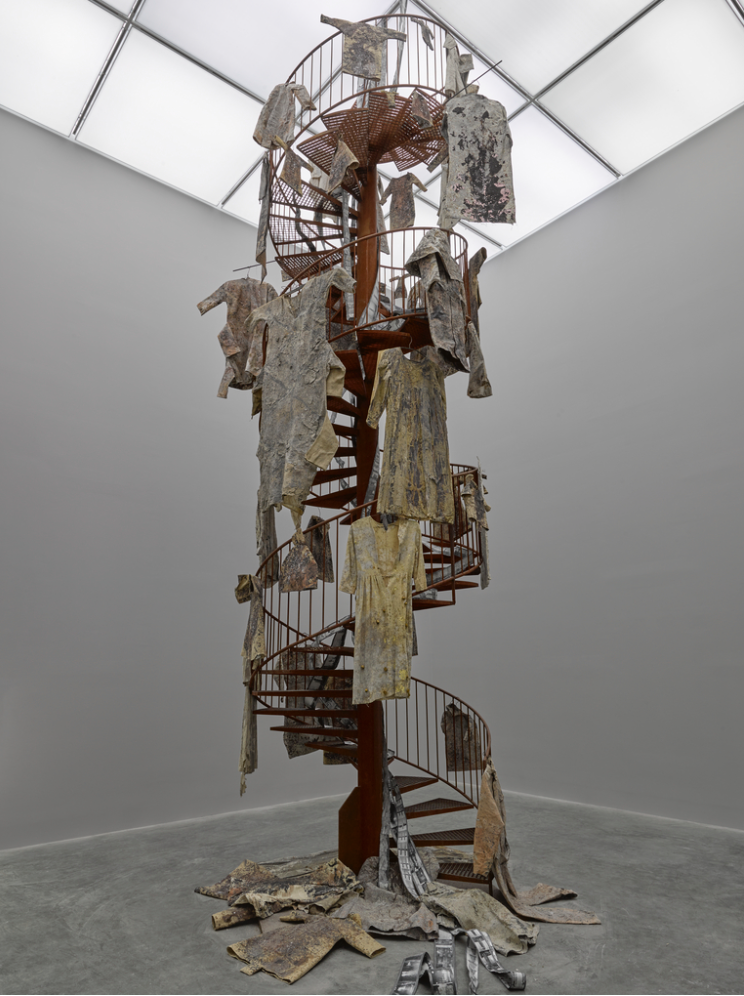
Anselm Kiefer, Sursum corda (2016). Photo Courtesy of White Cube (Ben Westoby).
The exhibition takes its title from Norse mythology, “Walhalla” being a mythical sanctuary for those who perish in battle, ruled by the god Odin. While this may initially suggest eventual peace for departed warriors, Walhalla actually serves as a sort-of precursory world in which inhabitants prepare to fight on behalf of Odin in the ultimate battle of Ragnarök. Therefore, any kind of peace is ultimately temporary and unfulfilled. (It is also worth mentioning that Odin, Walhalla, and Norse mythology have long been appropriated as symbols and dog-whistles by neo-Nazi movements).
White Cube’s expansive space has been fashioned here to create galleries that branch off the primary corridor and installation. In the ‘9 x 9 x 9’ gallery, an imposing, rusty spiral staircase leading into the ceiling (and presumably, “the beyond”) stands in the center of the room, with strips of film reels (mounted onto lead) and well-worn dresses on hangers dangling along the staircase’s incline.
Entitled Sursum corda, the sculpture refers to Valkyries—women who accompany the dead on their journey to Walhalla, and who have chosen to die along with the male warriors. Sursum corda alludes to the moment the Valkyries arrive at Walhalla after a long climb up the stairs, throughout which they are slowly disrobed. As such, the sculpture serves as a monument to those who no longer need the dresses they have left behind.
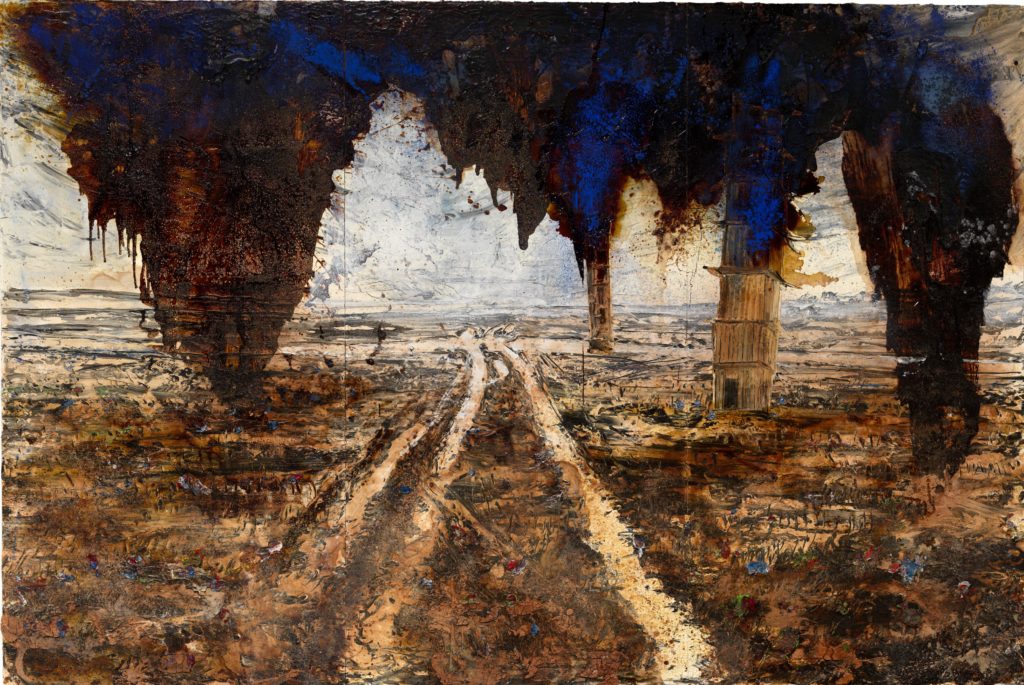
Rorate cali desuper (2016). ©Anselm Kiefer. Photo ©White Cube (Charles Duprat).
A series of new paintings and vitrines are on view in the final, and largest, gallery. Kiefer employs his familiar motif of towers in his paintings—which range in material from oil, acrylic, and emulsion to shellac and clay—to depict scenes of destruction and solitude. Dark clouds of smoke burst from atop the towers in Böse Blumen (2016), while in Rorate caeli desuper (2016), recently-activated bombs appear to be peppering the otherwise-barren landscape.
Kiefer uses a comforting blue in Walhalla (2016), whose depicted buildings reference the “neo-classical, imposing architecture” of the mythical city, but upon whose grounds remains of warfare seem to be scattered.
The exhibition is replete with references to archival materials, and may, in some ways, aim to serve as an archive itself. An entire gallery with the work Arsenal (1983-2016) is filled with boxes, shelves, filing cabinets, and other storage items, giving one the sense that a disorganized hoarder has committed themselves to recording and keeping alive memories of the dead.
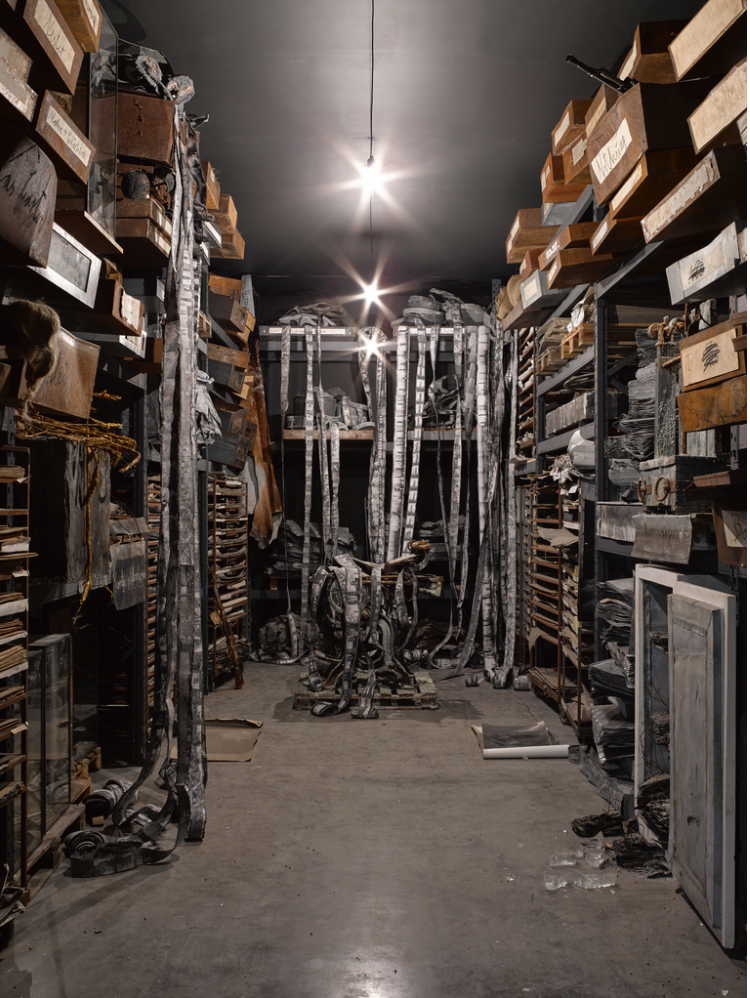
Anselm Kiefer, Arsenal (1983-2016). Courtesy of White Cube (George Darrell).
In addition to this, the many vitrines on display alongside the paintings adopt the feeling of relics or shrines: one holds a tree in soil with bulbs on its branches, another a set of discarded bicycles sitting atop a stack of bricks and weighed down by a large piece of lead. Trees and branches are repeat-items held safely behind their glass vitrines, like fossils or symbolic mementos.
The press release promises “dramatic new paintings and sculpture that deal simultaneously with notions of creation and destruction, life and death,” topics which are at the crux of human existence.
While we do get a solid variety of Kiefer’s work in the presentation, the end result feels tilted towards the angle of memory and commemoration: the overall aura is of death and destruction, and how, as others travel toward Walhalla, the Earth-bound survivors deal with the reality of the loss and conflict that remain behind.
Anselm Kiefer, “Walhalla” is on view at White Cube Bermondsey from November 23, 2016—February 12, 2017.